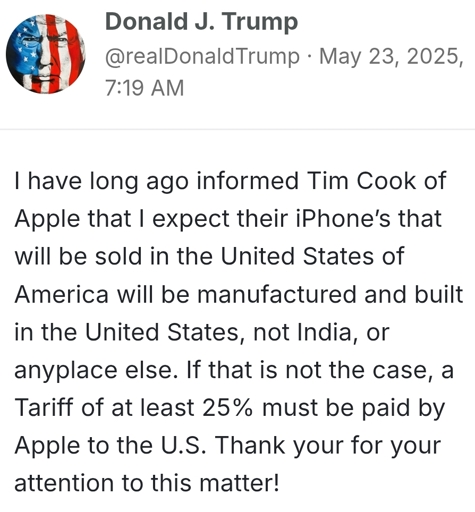Solar + Battery (covering 97% of demand) is now cheaper than coal and nuclear
-
I wanted to make a joke about plug flow electricity because your in the UK I believe from what you said, but I don't know enough about it. Doesn't sound like it could supplement much energy in its current stages. I am curious to see if it ever makes any substantial amount in the next 10 years. (Right now it's so early they are talking only about a few LEDs sort of electricity)
If you haven't heard of it, it is a process of maximizing the use of air pockets created in catching falling water (rain) and allowing it to split in a way that can convert the kinetic energy of it essentially to about 10% electrical energy. Supposedily about 5x as effective as just letting the water fall on its own and turning it to mechanical energy. There's something about it that seems whimsical about it to me. Not sure why.
Using rain for electricity sounds like too fun to be efficient enough xD I’m gonna look into that

-
I feel you… I got a nice 3k€ to pay for electricity just for winter months and that’s with a quite performant heat pump.
But at least zero emissions here…I've got solar with net metering. But apparently I leave in a much gentler environment still, compared to you. Got a small house (<150sqm), winters reach -20°C and have sustained -10°C for multiple weeks and yet the bill hasn't reached past 1400€/mo before solar panels. Everything in the house is runs on electricity.
-
I've got solar with net metering. But apparently I leave in a much gentler environment still, compared to you. Got a small house (<150sqm), winters reach -20°C and have sustained -10°C for multiple weeks and yet the bill hasn't reached past 1400€/mo before solar panels. Everything in the house is runs on electricity.
With 2 electric cars… Belgium here so it’s not the tundra either but the house is sizeable and doesn’t share walls. Hot water alone was 150/200 kWh a month. It all adds…
-
With 2 electric cars… Belgium here so it’s not the tundra either but the house is sizeable and doesn’t share walls. Hot water alone was 150/200 kWh a month. It all adds…
Still a lot. I have to say my cost was before the "recent" hikes. Though my house doesn't share walls either.
-
Some key insights from the article:





Basically, what they did was to look at how much batteries would be needed in a given area to provide constant power supply at least 97% of the time, and the calculate the costs of that solar+battery setup compared to coal and nuclear.
uninterrupted every hour of every day
-
97% sounds impressive, but thats equivalent to almost an hour of blackout every day. Developed societies demand +99.99% availability from their grids.
i’m sure you can squeeze out a measly 3% from wind and hydro, no?
-
This is still more polluting to mine than going nuclear, even accounting for nuclear waste.
Why compare it to nuclear rather than what's currently being used in that area? Coal and gas.
Nuclear is good for providing a stable base load, but having the entire grid be nuclear would be very expensive. And if everyone were to do the same, the market cost of fissile fuel materials would skyrocket.
Lots of solar and wind in the energy mix is a no-brainer.
-
uninterrupted every hour of every day
Works 97% of the time, every time!
-
As others have said this is for Las Vegas which receives wayyy more sun than the average place. But the other misleading part is they looked at 20 years which is close to the life cycle for solar/batteries and not even half the life of nuclear
But the other misleading part is they looked at 20 years which is close to the life cycle for solar/batteries and not even half the life of nuclear
I think Lazard's LCOE methodology looks at the entire life cycle of the power plant, specific to that power plant. So they amortize solar startup/decommissioning costs across the 20 year life cycle of solar, but when calculating LCOE for nuclear, they spread the costs across the 80 year life cycle of a nuclear plant.
Nuclear is just really, really expensive. Even if plants required no operating costs, the up front costs are so high that it represents a significant portion of the overall operating costs for any given year.
The Vogtle debacle in Georgia cost $35 billion to add
2 MW2GW (edit to fix error) of capacity. They're now projecting that over the entire 75 year lifespan the cost of the electricity will come out to be about $0.17 to $0.18 per kilowatt hour. -
That is the main criticism of nuclear, it should hopefully get better with Westinghouse’s AP1000 receiving full approval and being built all across China so as long as we continue to use the same design it can start to be mass produced instead of making all the parts as one offs that are much more expensive and time consuming
Vogtle added 2 AP1000 reactors for $35 billion. Future deployments might be cheaper, but there's a long way to go before it can compete with pretty much any other type of power generation.
-
Using rain for electricity sounds like too fun to be efficient enough xD I’m gonna look into that

Yeah I think I like it because it doesn't sound practical haha. It's like what childhood me would want.
-
Yeah I think I like it because it doesn't sound practical haha. It's like what childhood me would want.
I read not so long ago that someone tried to leverage human walking / steps. Now raindrops. I love it

-
Some key insights from the article:





Basically, what they did was to look at how much batteries would be needed in a given area to provide constant power supply at least 97% of the time, and the calculate the costs of that solar+battery setup compared to coal and nuclear.
This is US centric, and panels are 1/3 cost in China, batteries 1/2, and labour/land 1/2 ish too.
just 17 kWh of battery storage is enough to turn 5 kW of solar panels into a steady 1 kW of 24-hour
clean powerThis is a bad model, though they are saying 3.4 hours of storage, and LasVegas as their best site. AC use is typically day only, but heat waves do make it a 24 hour demand issue on the longest solar production days. For LV, 5kw of solar will produce 32kwh/day, ranging in seasons from 29-35.5kwh. Already a problem for their 1kw "transmission setup" in that production is higher. The 2nd problem is that there is/can be higher demand during the day than night, due to AC.
The biggest problem of all is a battery in LV, even with 2kw transmission per 5kw solar, would charge in winter up to 19kwh of batteries. Summer 21.5kwh. The 2 big variables are batteries vs transmission size, and demand shifting opportunities, where necessarily fully charging batteries every day is a cost optimization, though fully delivering power on highest demand days is a revenue/price optimization.
cost assumptions are $563/kw solar-electrical hardware, and $181/kwh batteries. They may not include land and deployment costs. They use outdated pessimistic 20 year lifetimes. They have terrible comparisons to coal and NG as well.
Both coal and NG plants cost the same for basic peaker plant. A double efficient NG plant costs double, but loses flexibility. They have variable fuel costs and relatively fixed operation costs. Before covid, all 3 options cost $1/watt to build, giving a huge advantage to solar for not having fuel/operations costs.
A much easier way to model cost of solar+battery system is independently. Solar at $563/kw in LV to make 10% "yield" per year (covering full financing and a healthy profit). needs $56.30 revenue/year = 2.4c/kwh = $24/mwh. Even $1/w US system requires 4.27c/kwh The same base profit over operational costs as FF plants. Batteries last 30 years too, and 10% yield means a discharge/charge profit requirement of 5c/kwh at night, with possible double cycling from clouds/frequency balancing, or lunch cooking demand spike, where any profit is bonus profit.
So as long as duck curve/early evening/morning breakfast electricity markets are 7.4c/kwh TOU "wholesale"rates or higher, and daytime rates above 2.4c/kwh, solar + batteries (that fully charge every day) then that far beats any new dead ender energy plants. Also, for a 1gw transmission line, compared to OP model, you only need 1.7gw solar instead of 5gw.
In short term there are existing FF plants that can serve as backup, and where it is extremely undesirable to have any human activity in their surrounding areas, host solar to piggy back on their transmission capacity. That these plants were paid 20-40c/kwh to provide 10%-20% of power needs, with a combination of per kwh pricing, and fixed "stay ready for backup" payments, would permit these plants to stay open/operational. In short/medium term, EVs are a great resource to replace both utility batteries, and backup FF plants with more solar. Being paid 3-10c/kwh profit (depending on demand primarily from nightime AC/heating)
In long term, the path to solar+battery/EV power every day is much more solar with H2 electrolysis. $2/kg costs are already achievable today with 2c/kwh "surplus solar" input. It is an even more rapidly advancing tech/cost efficiency field. $2/kg is equivalent for a FCEV to $1/gallon gasoline vehicle range. It is 6c/kwh CHP (free domestic hot water energy), and 10c/kwh electric only energy, in addition to many chemical applications such as local fertilizer production. Electrolysis of NG is a more efficient (than water electrolysis) green H2 process that produces carbon black as byproduct. A solid precursor to graphene and battery electrodes.
H2 works today for places outside LV, where solar is much more variable. In Canada where long summer days may not need AC, high saturation solar can drop below 2c/kwh for 9 months, but be worth 15c/kwh for 80-90 days. A balance between existing energy systems and new solar works everywhere in the world. H2 export/import infrastructure also cost efficiently displaces much FF energy.
As long as daytime wholesale electricity rates in LV are above 2.4c/kwh, they need more solar. A similar number can be calculated elsewhere. Nuclear and more expensive combined NG energy cannot compete because daytime solar will cut into the hours they can sell energy.
-
As others have said this is for Las Vegas which receives wayyy more sun than the average place. But the other misleading part is they looked at 20 years which is close to the life cycle for solar/batteries and not even half the life of nuclear
solar today is warranteed for 30 years. No reason to replace before 60 years compared to adding more beside it.
-
But the other misleading part is they looked at 20 years which is close to the life cycle for solar/batteries and not even half the life of nuclear
I think Lazard's LCOE methodology looks at the entire life cycle of the power plant, specific to that power plant. So they amortize solar startup/decommissioning costs across the 20 year life cycle of solar, but when calculating LCOE for nuclear, they spread the costs across the 80 year life cycle of a nuclear plant.
Nuclear is just really, really expensive. Even if plants required no operating costs, the up front costs are so high that it represents a significant portion of the overall operating costs for any given year.
The Vogtle debacle in Georgia cost $35 billion to add
2 MW2GW (edit to fix error) of capacity. They're now projecting that over the entire 75 year lifespan the cost of the electricity will come out to be about $0.17 to $0.18 per kilowatt hour.2gw, but yes, before any operational/maintenance costs that is $17.5/watt. Solar is under $1/watt, and sunny AF.
-
i’m sure you can squeeze out a measly 3% from wind and hydro, no?
using old/existing FFs 3% of the time instead of 100% is a 97% emission reduction.
-
But the other misleading part is they looked at 20 years which is close to the life cycle for solar/batteries and not even half the life of nuclear
I think Lazard's LCOE methodology looks at the entire life cycle of the power plant, specific to that power plant. So they amortize solar startup/decommissioning costs across the 20 year life cycle of solar, but when calculating LCOE for nuclear, they spread the costs across the 80 year life cycle of a nuclear plant.
Nuclear is just really, really expensive. Even if plants required no operating costs, the up front costs are so high that it represents a significant portion of the overall operating costs for any given year.
The Vogtle debacle in Georgia cost $35 billion to add
2 MW2GW (edit to fix error) of capacity. They're now projecting that over the entire 75 year lifespan the cost of the electricity will come out to be about $0.17 to $0.18 per kilowatt hour.Vogtle’s numbers are incredibly biased considering they made an entire design and then had to redo it halfway through that’s not a realistic cost that can be expected for future projects. We also have vogtles design be approved now so that new plants can be built for a fraction of the cost. Also where did you see they did amortization of solar?
-
I you live where sun is abundant all year round… In which case (Las Vegas?) I would question the choice of having humans living in a fucking desert in the first place. But man I wish I could cover my needs between October and March here in Europe but no battery will help me store so much for so long

"bad" solar areas are actually amazing for 9 months, and if you heating needs are met by other means, then winter can keep the lights on and still do cooking. The path to meeting winter heating needs is hot water and "heated dirt/sand" storage with hydronic floor heating (where more water is delivered at 30C is easier to manage than radiators at 80C) that can be stored during ample fall solar with no heat or cooling load.
-
Vogtle added 2 AP1000 reactors for $35 billion. Future deployments might be cheaper, but there's a long way to go before it can compete with pretty much any other type of power generation.
They had to switch halfway through which is what added the cost that’s not a realistic cost per reactor
-
solar today is warranteed for 30 years. No reason to replace before 60 years compared to adding more beside it.
Batteries and panels degrade over time. So if you are trying to maintain a specific amount of power you would need to keep investing in order to maintain the same amount of power generation
-
-
-
Time reporters were able to use Google's AI to make convincing videos of Muslims setting fire to a Hindu temple; Chinese researchers handling a bat in a wet lab; and election workers shredding ballots
Technology 1
1
-
-
-
Trump says a 25% tariff "must be paid by Apple" on iPhones not made in the US, says he told Tim Cook long ago that iPhones sold in the US must be made in the US
Technology 2
2
-
-





